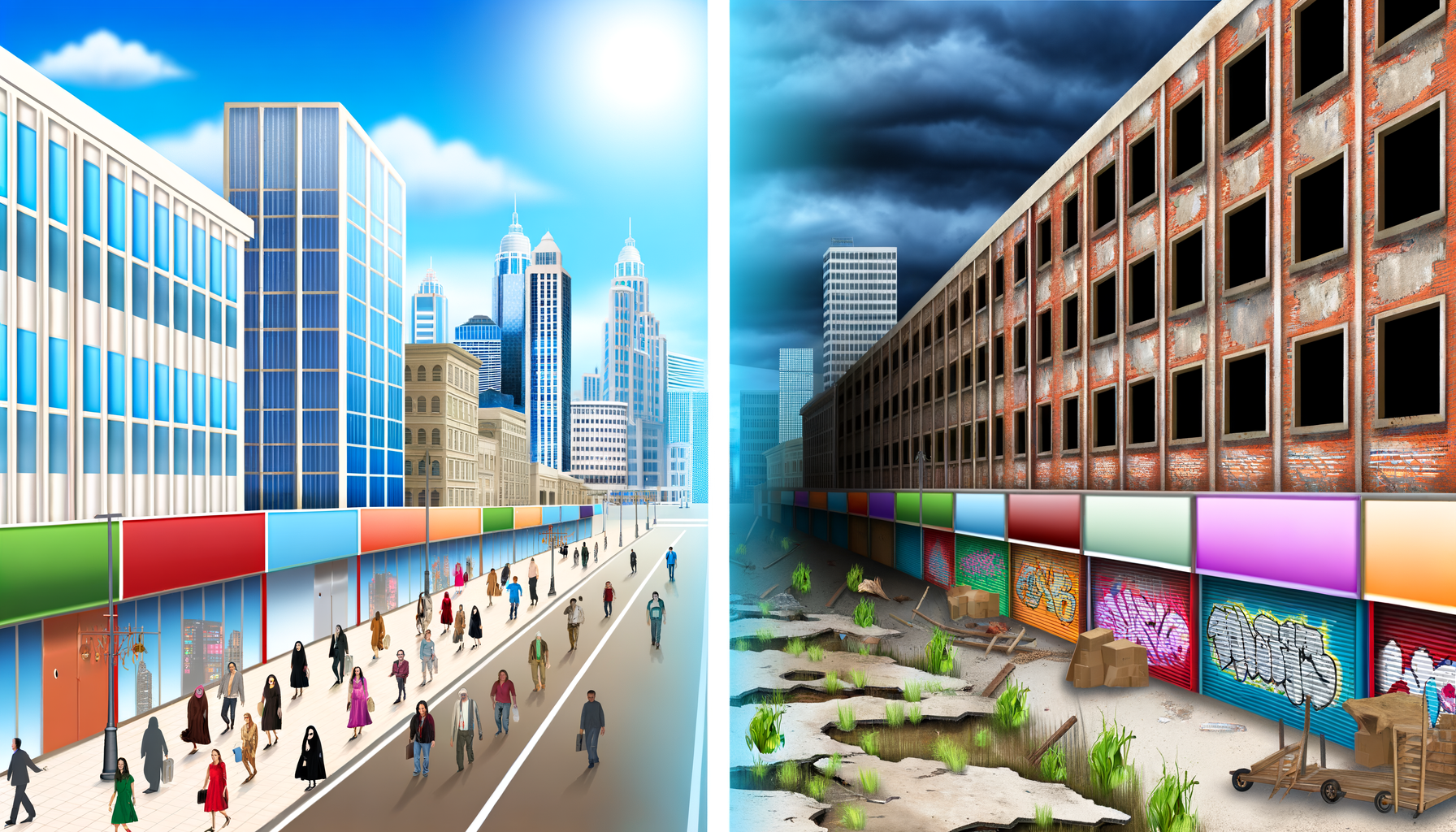“`html
Is New York City Facing a Youngstown-Style Decline?
As New York City continues to feel the effects of various economic challenges, some experts are beginning to draw parallels between its current situation and the decline of Youngstown, Ohio, a once-thriving steel town that faced irreversible changes in its industry. Is NYC, with its iconic skyline and vibrant cultural scene, at risk of a similar fate? Let’s explore this pressing question together.
What Happened to Youngstown?
To understand the potential parallels with New York City, we first need to look back at the story of Youngstown. Once a booming steel city in the early to mid-20th century, Youngstown thrived on its industrial strength. However, by the late 1970s and early 1980s, the steel industry began to collapse due to a variety of factors including foreign competition, technological changes, and shifts in the economy.
– *A significant loss of jobs*: Between 1977 and 1980, Youngstown lost over 50% of its manufacturing jobs. This led to devastating unemployment rates and forced many families to leave their homes in search of better opportunities.
– *Subsequent economic decline*: With the departure of the steel industry, Youngstown faced economic downturns that transformed it from a thriving urban center into a city struggling with high poverty rates and declining infrastructure.
New York City: The Urban Giant Today
Fast forward to today, New York City embodies the hustle and bustle of urban life and has long been considered a global hub for finance, culture, and innovation. However, the city is not immune to economic fluctuations.
In recent years, NYC has faced numerous challenges:
- The COVID-19 Pandemic’s Impact: The pandemic brought about an unprecedented shutdown, leading to massive job losses, particularly in sectors like hospitality and retail. As New Yorkers have reevaluated their living situations, some have chosen to leave the city in search of more affordable options elsewhere.
- High Costs of Living: NYC has notoriously high rent prices and living expenses. Many residents, especially younger individuals and families, are feeling the financial strain. This might lead to an exodus of talent, akin to what Youngstown faced when jobs disappeared.
- Crime Rates and Safety Concerns: A rise in crime rates has caused worry for many New Yorkers. Safety concerns can lead people to leave urban environments in search of safer communities.
The Warning Signs of Decline
While New York City is vastly different from Youngstown, there are warning signs that shouldn’t be overlooked:
“Understanding the lessons from the past can help us shape a better future.”
Recent trends indicate the potential for an economic shift, and several signs signal that a decline could be on the horizon:
- Population Shifts: A decline in population, especially among young professionals, can lead to fewer innovative ideas and reduced economic activity. It mirrors Youngstown’s loss of talent during its industrial decline.
- Disinvestment in Infrastructure: Aging infrastructure in transportation, utilities, and housing could lead to a decline in the quality of life, prompting further departures from the city.
What Can NYC Learn from Youngstown?
Drawing lessons from Youngstown’s decline can be crucial in preventing a similar fate for New York City. Here are a few takeaways:
- Diversification of the Economy: Youngstown relied heavily on one industry. NYC must continue fostering diverse sectors like technology, healthcare, and green energy to remain resilient against downturns.
- Investment in Community: Engaging and supporting local businesses can revitalize neighborhoods. Programs to boost entrepreneurship can help create a sustainable economic base.
- Prioritizing Safety and Quality of Life: Ensuring public safety, maintaining infrastructure, and enhancing public spaces are critical for keeping residents and attracting newcomers.
The Future: A Chance for Change
While concerns about a Youngstown-style decline loom, it’s important to remember that New York City has a unique capacity for resilience and reinvention. The city has faced challenges before and has emerged stronger, often with renewed vigor and creativity. As we look forward, let’s focus on solutions rather than despair.
In conclusion, while the challenges NYC faces are significant, understanding the signs and actively addressing them can prevent a decline. Community engagement and smart planning can help ensure this iconic city remains vibrant. “The lessons from history can guide us, but it’s up to us to shape the future.”
Let’s remain hopeful for New York City—a city known for its tenacity, spirit, and endless possibilities.
For more information on NYC’s economic trends and community initiatives, check out the official NYC website.
“`


